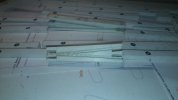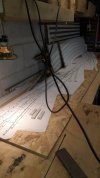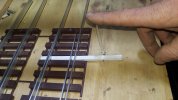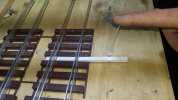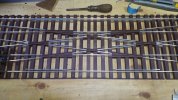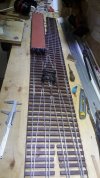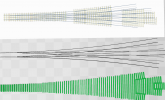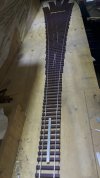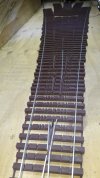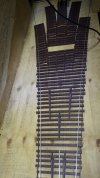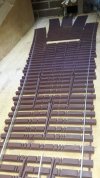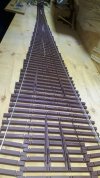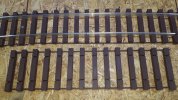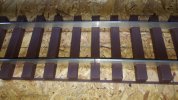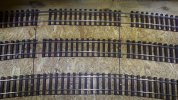Greg Elmassian
Guest
It is considered flange bearing if the INTENT is that the flange of the wheel rides in the bottom of the flangeway.
Yes, indeed, it clearly depends on the wheel flange.
If you study mainline/prototype switches, you will see that flange bearing frogs are common, but they rely on a consistent flange depth.
Our hobby has anything BUT consistent flange depths.
Now, if you "control" your environment and have all flanges the same depth, matched to flange bearing frogs, then it actually works very well, as there are indeed substantial benefits to a flange bearing frog.
But, my main point is that for those of us have rolling stock with widely varying flange depths, flange bearing frogs are not a good solution.
Again, the classification of a frog being flange bearing or not flange bearing is by design of the frog, and makes assumptions of the flange depth of the wheels running through it.
The classification of a frog changing because you use different wheels, some may ride in the bottom of the flangeway and some not is not correct... I get your point you could define things from how they operate, given different "inputs", but there is more to the frog geometry than flangeway depth, MUCH more....
Greg
Yes, indeed, it clearly depends on the wheel flange.
If you study mainline/prototype switches, you will see that flange bearing frogs are common, but they rely on a consistent flange depth.
Our hobby has anything BUT consistent flange depths.
Now, if you "control" your environment and have all flanges the same depth, matched to flange bearing frogs, then it actually works very well, as there are indeed substantial benefits to a flange bearing frog.
But, my main point is that for those of us have rolling stock with widely varying flange depths, flange bearing frogs are not a good solution.
Again, the classification of a frog being flange bearing or not flange bearing is by design of the frog, and makes assumptions of the flange depth of the wheels running through it.
The classification of a frog changing because you use different wheels, some may ride in the bottom of the flangeway and some not is not correct... I get your point you could define things from how they operate, given different "inputs", but there is more to the frog geometry than flangeway depth, MUCH more....
Greg

